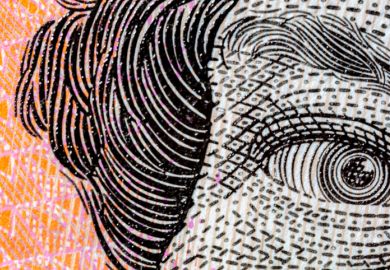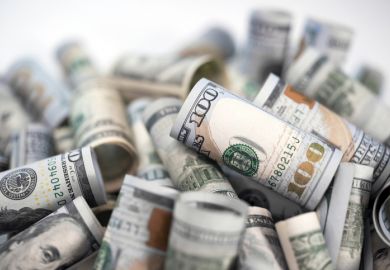People will believe in fairies if there's a buck to be made, says Howard Davies.
In March 1929 Paul Warburg was anxious. He saw a booming stock market fuelled by cheap money, with many leveraged investors riding for a fall. "In aeronautics the public is generally inclined to look upon the art of rising into the air as the sole accomplishment," he noted dryly. "The layman is apt to overlook the fact that mastery of the art of descending is of equal if not greater importance." In case the import of his words was lost in the simile, he added: "If orgies of unrestrained speculation are permitted to spread too far, the ultimate collapse is certain not only to affect the speculators themselves, but also to bring about a general depression involving the entire country."
Warburg's was a rare, if not precisely a lone voice. The consensus view among market participants and commentators was very different. For most, a new era had dawned, in which the rules of economic life were being rewritten. This new era "meant permanent prosperity, an end to the old cycle of boom and bust (where have we heard that recently?), steady growth in the wealth and savings of the American people, continuously rising stock prices".
Certainly, in early 1929 the new era bulls had it. In just one year, the number of millionaires in the US had almost doubled, while the number of ordinary Americans earning more than $3,000 a year had gone up two-and-a-half times. This was not, in other words, just a boom for the plutocrats. The trickle-down effect was at work. Unfortunately, while wealth trickled down, so too did the profligate habits of New York speculators, and many small investors bought cheerfully on margin or invested in highly leveraged investment trusts. Investors who bought stock and investment trusts on margin "used leverage to buy shares in a leveraged company, which owned shares in other leveraged companies". Goldman Sachs was a particularly successful marketer of such trusts, to small and large investors.
So when what Maury Klein describes as "the dreaded tsunami of selling" crashed down on the market in October 1929, it drowned both the big and the small. It drowned both the gullible and the apparently sceptical. Groucho Marx saw his entire net worth swept away. "All I lost was $240,000," he quipped later. "I would have lost more but that was all the money I had."
Harpo did the same, and was left with no assets other than his harp.
A few, a fortunate few, escaped the catastrophe. Albert Wiggin, then chairman of Chase National Bank, shorted his own stock aggressively while recommending it to everyone else and protected his personal wealth. There were those at National City Bank (the forerunner of today's Citigroup) who also protected themselves. They punted Brazilian bonds to unsuspecting investors, while noting internally that the borrowers concerned displayed "complete ignorance, carelessness and negligence in respect to external long-term borrowing". But there was no Elliot Spitzer around at the time to expose National City's internal reflections to the public gaze.
Seventy years on, for the "new era" read the "new economy". Once again, at the end of the 1990s, we learnt that the American economy had rediscovered the alchemist's stone. Stock prices could rise and rise, to heights never previously seen, without anything so vulgar as a profit, or indeed in some cases even a dollar of income, being in prospect. The new economy would revolutionise the business systems of almost every section of the economy, and those who were not in on the secret would pay the penalty forever. Alan Greenspan's warning of the risks of "irrational exuberance" (Klein tells us he borrowed this phrase from a commentator in the 1920s) was blown away and caused barely a hiccup in the market's exhilarating rise.
It now seems that some of the investment banks concerned did not believe their own publicity, but that is little consolation to those who piled into new economy stocks that subsequently collapsed. And here in the UK we have seen similar sad stories of excessive leverage: the growth of split-capital investment trusts, borrowing and investing in each other to increase their gearing. Nothing at all has changed in the investment trust industry in the intervening period, it would seem. And, once again with uncomfortable echoes of Wiggin at Chase, we hear of Enron directors selling out at the top of the boom, leaving small shareholders and employees with their pension funds invested in the company's stock to carry the can.
Fortunately, the real-economy impact of the puncturing of the new-economy bubble in the spring of 2000 has so far proved modest, certainly much smaller than the impact of the crash of 1929, which was followed by a deep depression across the US and the rest of the developed world. But while the real-economy impact may have been different, other elements of the story are remarkably similar. In capital markets, "once bitten, twice bitten" is the order of the day.
This volume is one of a series of books describing "pivotal moments in American history". Klein, professor of history at the University of Rhode Island, with a list of distinguished business history volumes to his credit, tells a depressing tale of greed and gullibility. Few participants emerge with any credit. Perhaps Calvin Coolidge may be thought to have been prescient enough to get out while he was ahead but, according to Klein, he "set a presidential pace unique in its inertia". The rest of American officialdom displayed similar lack of understanding and action until it was too late. Then Herbert Hoover, and Congress, mostly did things that made the situation considerably worse.
On Wall Street, business ethics were, shall we say, highly questionable. Yet it is hard to feel huge sympathy with much of the investing public, ready to jump on any passing bandwagon. Klein attempts to explain their remarkable willingness to believe in fairies by setting the story within a broader historical context, and most of the book is a broad and atmospheric survey of postwar American society, focusing particularly on the boom years of the early 1920s. So we hear of the exponential growth of southern California. We drive south to Florida to participate in the astonishing real-estate boom. William Jennings Bryan, who moved to Miami in 1922, described it as "the only town in the world where we can tell a lie at breakfast that will come true in the evening". And we take part in evangelical meetings with Aimee Semple McPherson - a kind of Jerry Springer of her day.
So there is entertainment here, and a collection of evocative if poorly reproduced photographs. But Klein lacks a unifying theory of the crisis, and appears also to lack interest in financial market analysis. So when we finally struggle through to the autumn of 1929, and the market begins to head south, we remain without a clear explanation of why the bubble finally burst.
Also, and perhaps more surprisingly, the mechanics of the collapse are poorly explained. There are paragraphs overloaded with indigestible numbers about price falls and some cursory references to trends in corporate earnings. But, astonishingly for a book that focuses on movements in the Dow Jones industrial index, there is not a single chart or graph to aid understanding of the scale of the catastrophe that struck. Nor, perhaps more important, does Klein trouble to explain how the stock-market crash turned into a depression. There is, for example, just half a paragraph on the Smoot-Hawley tariff bill. Klein's only comment on that measure is "the conventional wisdom on Wall Street blamed the fall on the tariff, and certainly bear operators used it to club prices down". This will not, I think, do as a verdict on protectionist trade policies in the 1930s.
So while the prose rattles along, and Klein has assembled a good collection of anecdotes and quotes, it is hard to recommend this book as an exposition of why American history chose to pivot at that particular point. Indeed, even the writing style shows dangerous evidence of corruption creeping into academia from the airport bookstore. The technique Klein adopts is reminiscent of business books that pile anecdote on selective statistic in a breathless attempt to paint a picture: atmospherics as a substitute for analysis. There are lots of faits divers , some of them diverting, but others merely diversions that fill a page or two without advancing our understanding.
A mildly entertaining read, therefore, but one that leaves the essential mysteries of bubbles and crashes unexplained. So we await the next "new thing" with as much anxious apprehension as did Warburg in spring 1929.
Sir Howard Davies is chairman, Financial Services Authority.
Rainbow's End: The Crash of 1929
Author - Maury Klein
ISBN - 0 19 513516 4
Publisher - Oxford University Press
Price - £22.99
Pages - 345
Register to continue
Why register?
- Registration is free and only takes a moment
- Once registered, you can read 3 articles a month
- Sign up for our newsletter
Subscribe
Or subscribe for unlimited access to:
- Unlimited access to news, views, insights & reviews
- Digital editions
- Digital access to THE’s university and college rankings analysis
Already registered or a current subscriber? Login



